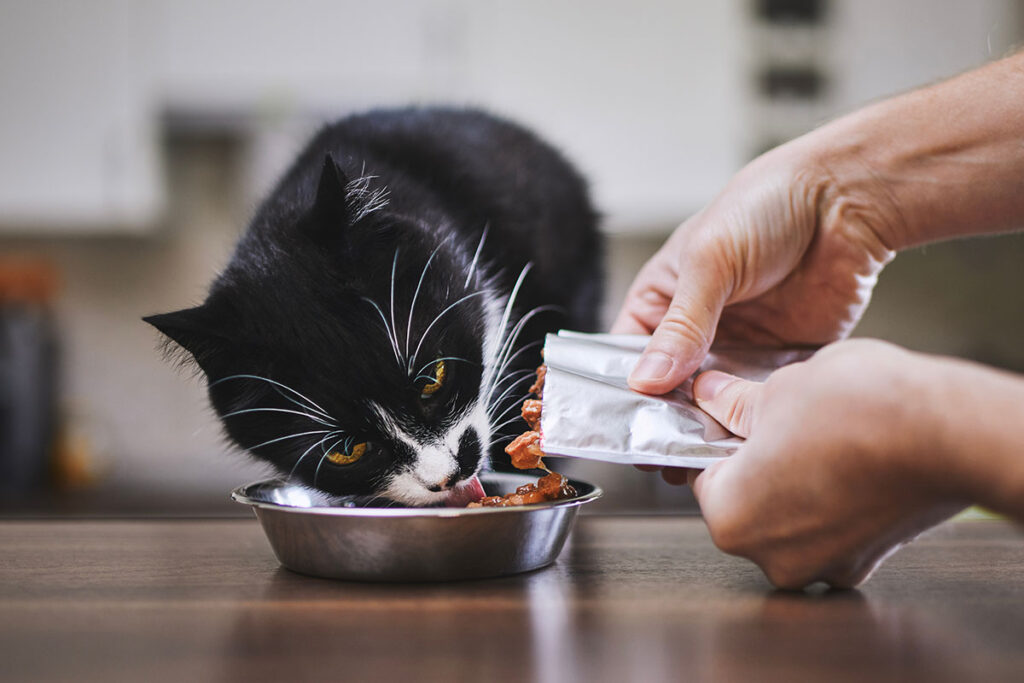Pet food labels can seem tricky at first. But they hold key info about what’s inside. Learning to read them helps you pick the best for your furry friend. This guide breaks it down step by step. We’ll cover what to look for and why it matters. You’ll feel more confident next time you shop.
Table of Contents
Why Bother with Pet Food Labels?
Labels tell you if the food is safe and nutritious. They show ingredients and nutrients. Good choices keep pets healthy. Poor ones might cause issues like allergies or weight gain. Vets say labels are your best tool. They follow rules from groups like AAFCO. These ensure food meets standards. Knowing labels means better care for your dog or cat.
Think about it. Your pet can’t tell you what they need. You decide for them. A clear label helps match food to their age and size. It also spots hidden fillers. Start here to avoid mistakes.
Breaking Down the Label: Main Parts
Every label has required sections. Let’s go through them one by one.
The Product Name
The name gives clues. It might say “Chicken Dinner for Dogs.” Rules control this. If it names an ingredient, like chicken, it must be a big part. For example, “Chicken Dog Food” needs at least 95% chicken. “With Chicken” means at least 3%. “Chicken Flavor” just needs enough for taste.
Watch for words like “dinner” or “entree.” They mean the named item is at least 25%. This stops misleading claims. Check this first to see what’s really inside.
Ingredient List
Ingredients go in order by weight. The heaviest comes first. Look for real meat at the top. Things like chicken or beef. Avoid lists starting with grains or fillers.
But weight includes water. So fresh chicken might rank high but dry out later. Meat meals are concentrated. They’re good sources of protein. By-products aren’t always bad. They can be nutrient-rich like liver.
Scan for allergens if your pet has issues. Common ones are wheat or soy. This list shows quality.
Guaranteed Analysis
This shows nutrient levels. It lists crude protein, fat, fiber, and moisture. “Crude” means how they measure it, not raw.
Protein should be at least 18% for adult dogs. Fat around 5-15%. Fiber under 5%. Moisture varies. Dry food has low moisture, about 10%. Wet food has more, up to 78%.
Use this to compare brands. But it’s minimums and maximums. Ask for detailed analysis if needed.
Nutritional Adequacy Statement
This is crucial. It says if the food is complete and balanced. Look for AAFCO approval. It might read: “Formulated to meet AAFCO profiles for adult maintenance.”
Check the life stage. Puppies need growth food. Adults need maintenance. All life stages work for any age. Feeding tests are best. They prove it works on real pets.
If it’s a treat, it might say “snack only.” Not for full meals.
Feeding Directions
These guide how much to feed. Based on weight and activity. For a 50-pound dog, maybe 2 cups daily.
But adjust for your pet. Active dogs need more. Lazy ones less. Split into two meals. Watch their weight.
Other Info on the Label
Find the maker’s name and address. Net weight too. Calorie count helps with portions. Best-by date keeps it fresh.
Some add claims like “organic” or “natural.” Organic follows USDA rules. No artificial stuff. Natural means no fake colors or flavors.
Types of Pet Food: Dry vs. Wet
Pet food comes in forms. Dry kibble lasts long. It’s crunchy and cleans teeth. In places with hot weather, like when buying dry dog food saudi arabia, it stores well.
Wet food has more water. It’s tasty for picky eaters. Mix dry dog food with wet for balance. Each type affects labels. Dry has low moisture. Wet has high.
Choose based on your pet’s needs. Ask your vet.
Important Terms to Know
- Complete and Balanced: Has all nutrients in right amounts.
- AAFCO: Sets standards for pet food.
- By-Products: Parts like organs. Often nutritious.
- Crude Protein: Measured protein level.
- Organic: No synthetics or GMOs.
- Grain-Free: No grains. But watch for heart risks.
Learn these to spot good food.
Tips for Smart Label Reading
Start with the adequacy statement. Ensure it fits your pet’s stage.
Compare ingredients. Favor whole foods over fillers.
Calculate cost per serving. Not just per bag.
Store food right. Airtight containers for dry. Fridge for wet after opening.
Talk to your vet. They know your pet’s health.
Avoid hype. “Premium” doesn’t mean better.
Check for recalls. Freshness matters.
Common Mistakes Pet Owners Make
Many skip the adequacy part. They pick by name only.
Over-rely on ingredient list. Forget nutrients.
Ignore portions. Leads to fat pets.
Buy expired food. Miss the date.
Fall for marketing. Like “human-grade.” Not always worth it.
Avoid these for better choices.
Wrapping Up: Empower Your Choices
Reading pet food labels gets easier with practice. Focus on key parts like ingredients and nutrients. Match to your pet’s needs. This guide gives you tools to choose wisely. Your pet will thank you with energy and health. Remember, when in doubt, ask a pro. Happy feeding!

